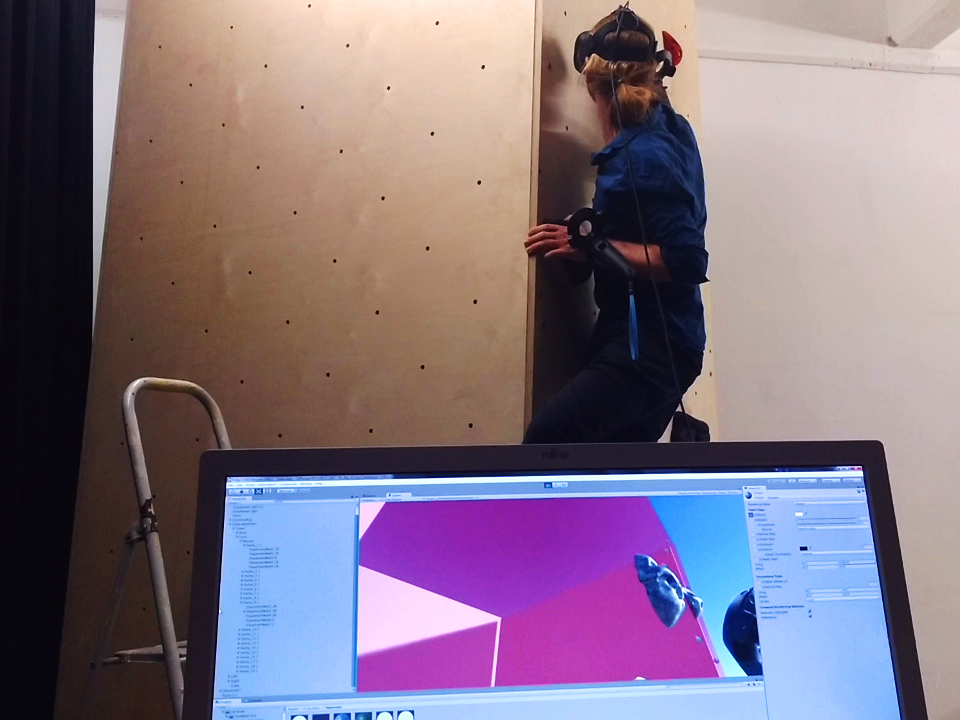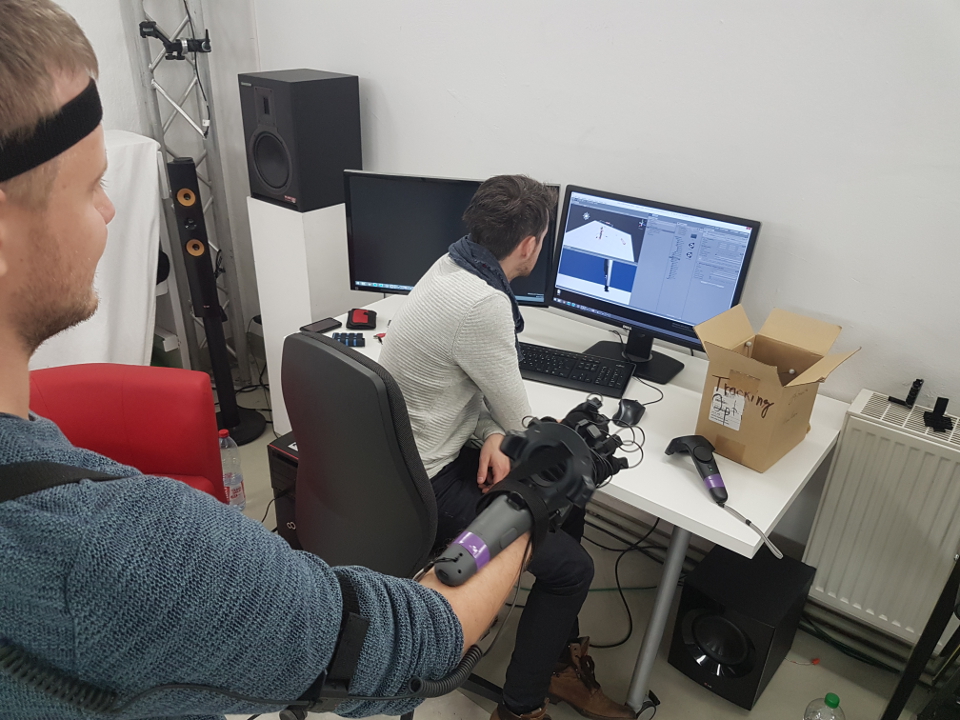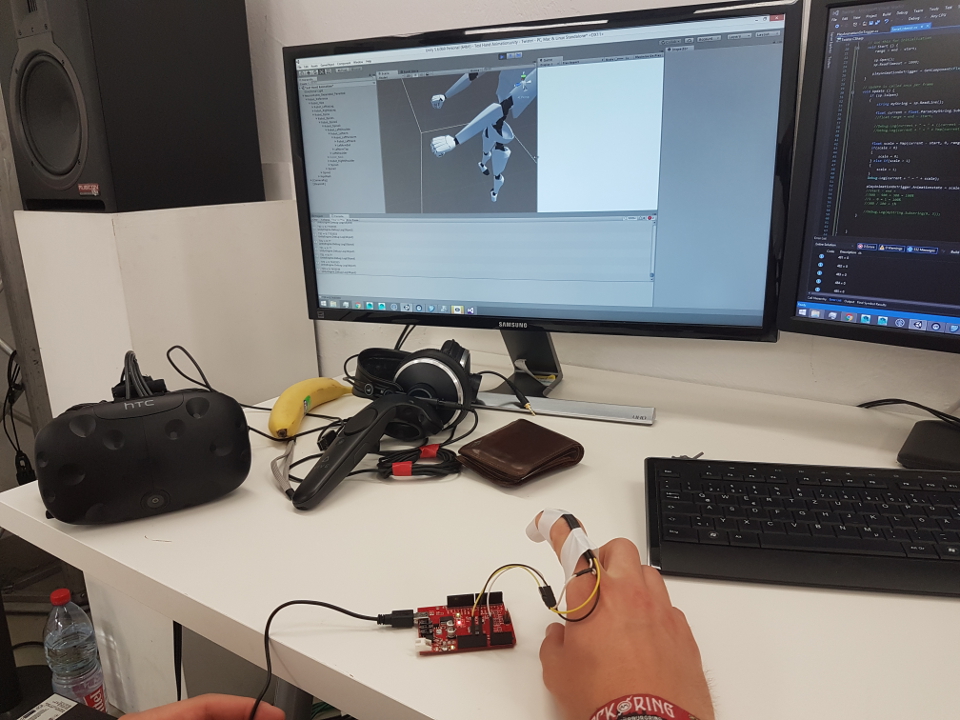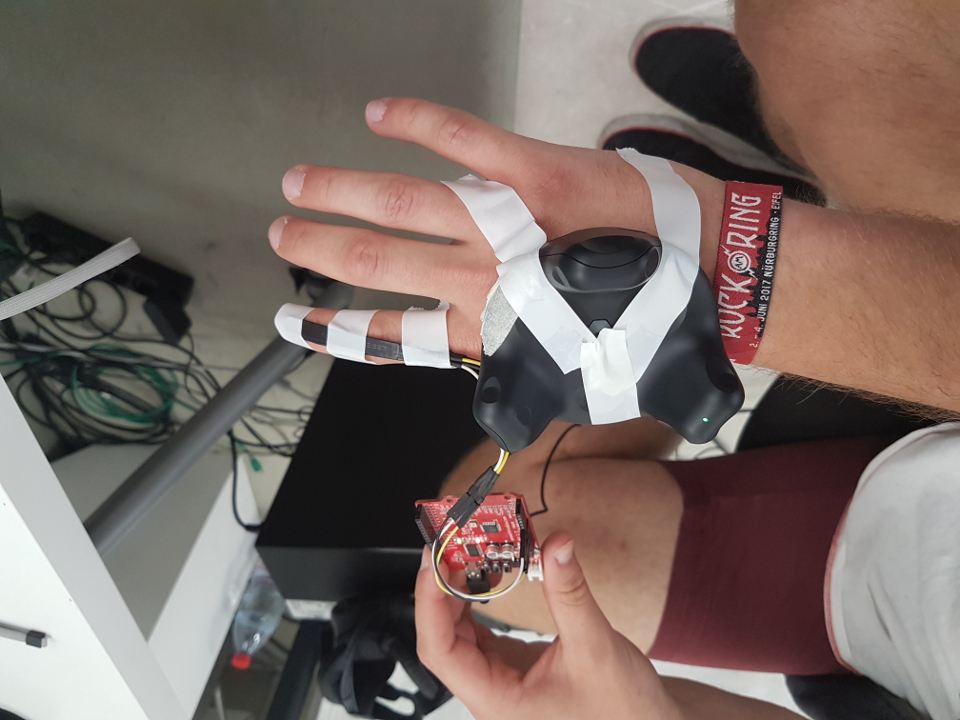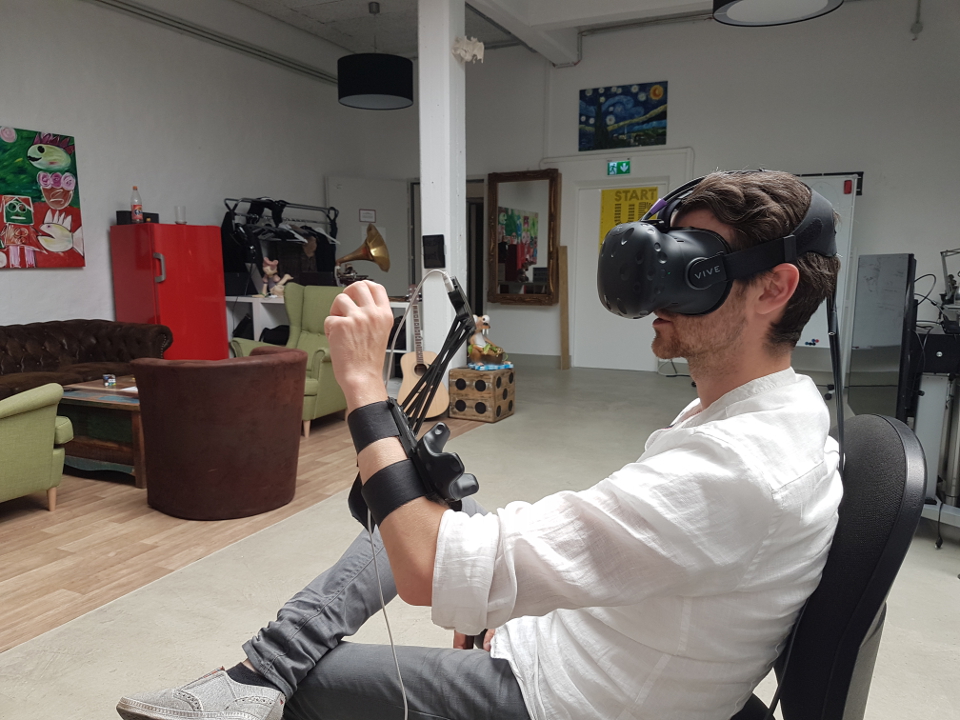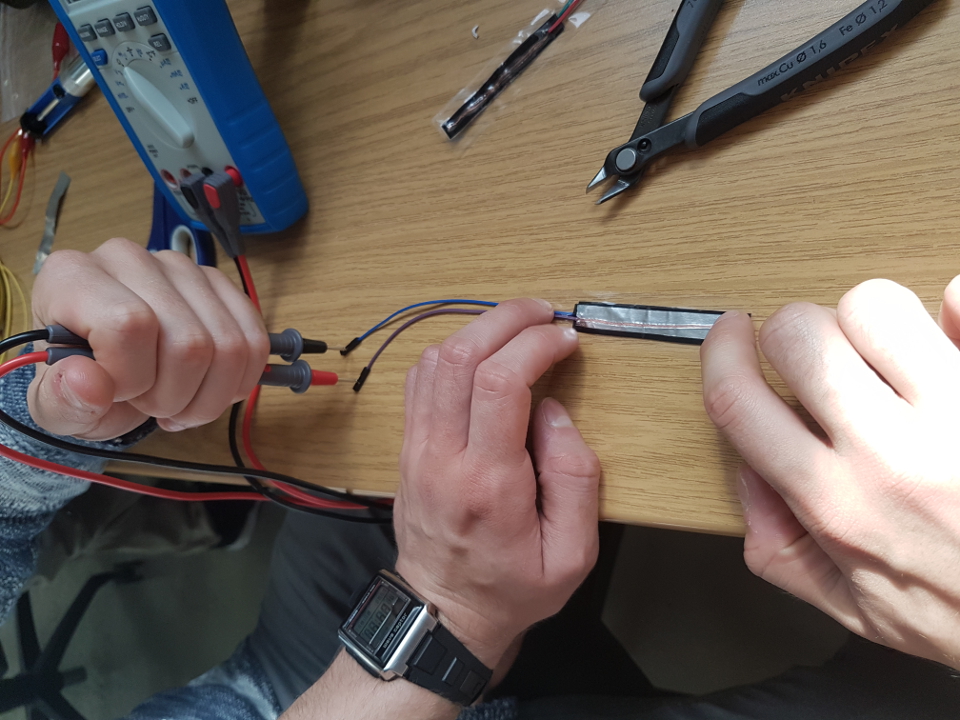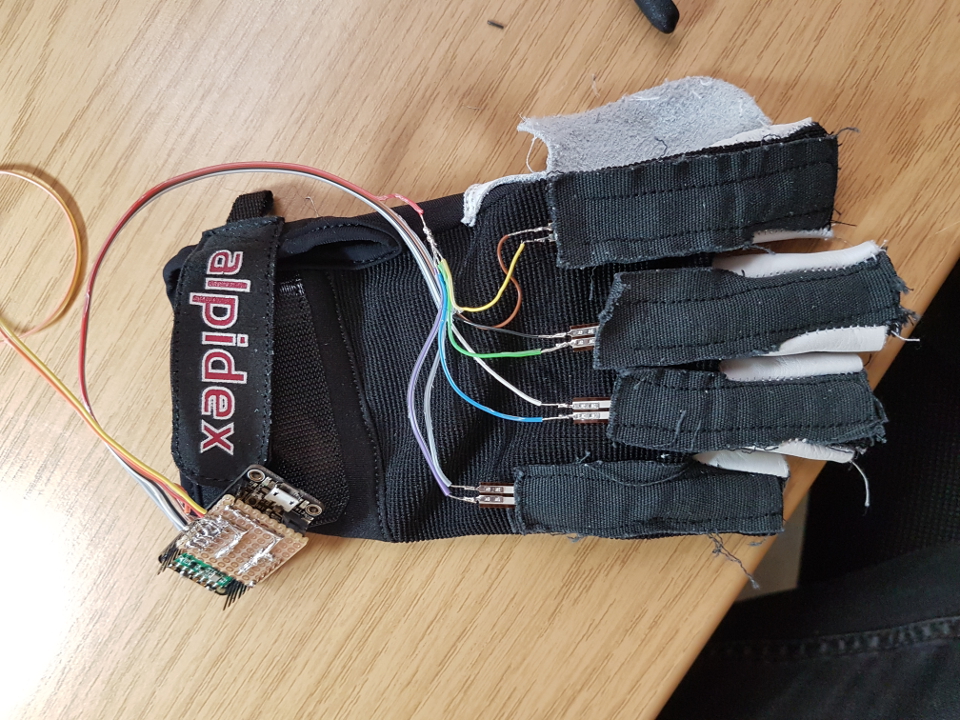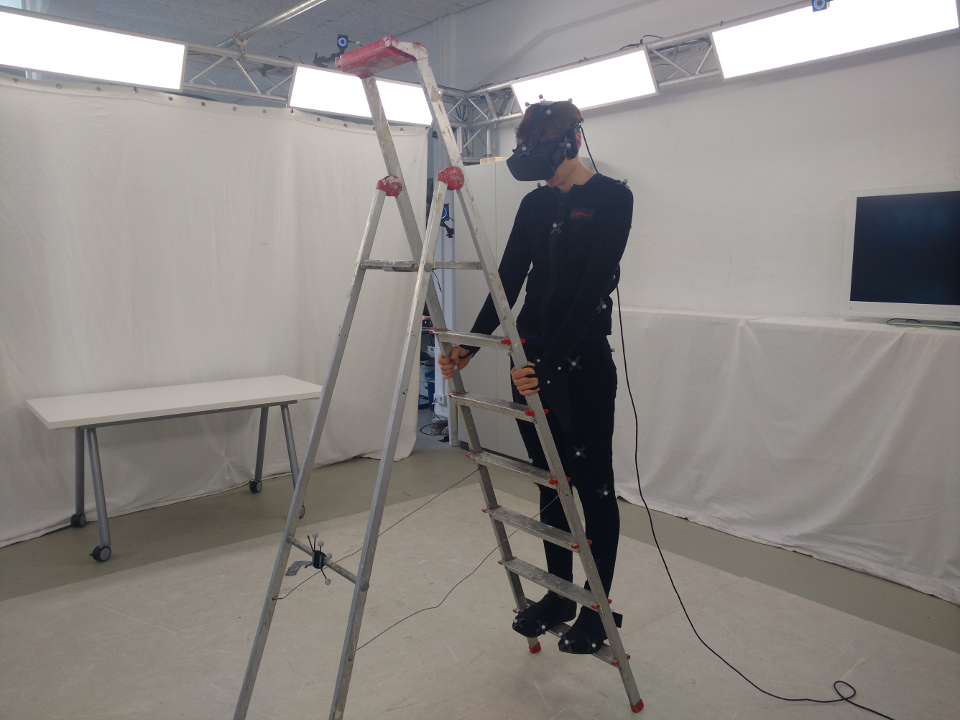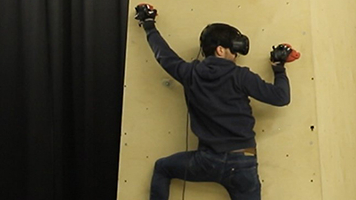
However, the trainee has to bring himself in a possible hazardous situation. Thus a user can climb with CliffhangerVR at low heights in reality and simultaneously on a high cliff in VR, such that stressful outdoor climbing situations can be trained safely indoors.
In order to give motion feedback and support natural climbing movements in VR, the system consists of the HTC-Vive-system and a self-developed glove. Several technologies were tested to ensure an appropriate climbing experience (see gallery images). For the purpose of supporting a haptic feeling through visual matching of the walls and stones of the tower, we reconstructed them in 3D. As a next step, we want to improve the glove to give a more natural climbing feeling and avoid cable breaks. Moreover, we want to integrate different immersive elements (Planks, Wind Machines, 3D-Audio, Haptic Elements [e.g. greens]) to study their effects on the perception of presence in the virtual scene. Simultaneously, we also investigate the effects of a narrative climbing scenario.
CliffhangerVR 2017
Iteration 1 (2017): Hendrik Preu, Ben Fischer, Laurin Gehardt, David Nowottnik, Marcel Tiator, Christian Geiger
Iteration 2 (2017): Dennis Scherf, David Solaski, Marcel Tiator
Past exhibition:
Innovationstag 2017, Düsseldorf (Web: www.innovationshub.de, Video: on Vimeo)
IEEEVR 2018, Reutlingen
SHS18 2018, Delft
